Scottish Horrors for Halloweenby Tom Doran Though Scotland's native film industry is really quite small, there are a number of film-makers who try their best to self-finance films that they want to make – while others, not Scots, often see (or rather imagine) a mystical Scotland only – dark, dreary, wet...and full of things that go bump in the night. In some ways they aren't wrong (yes, it's wet), and while no “major” horror films have come out of Scotland (or take place there), there's a wide number of small films that have. 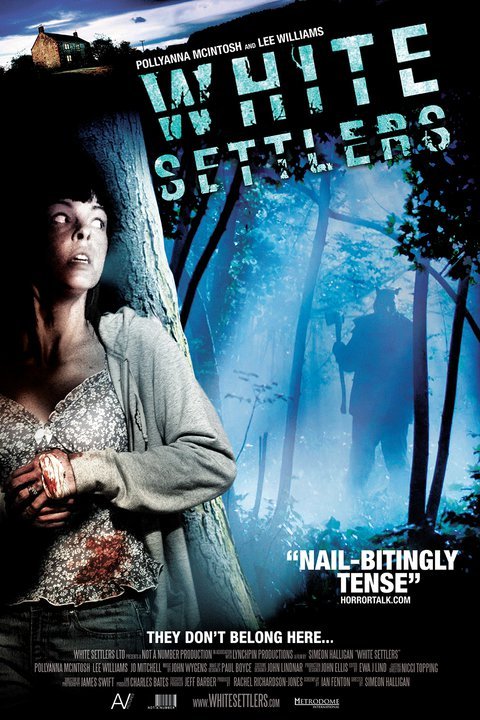
In the past we've had Scotland-based science fiction and horror films like Devil Girl from Mars (directed by a Scot, David MacDonald); X- The Unknown; Man from Planet X; Dog Soldiers, etc. that take place invariably in the Highlands but were actually filmed in other locales in Britain, or in other countries completely (Dog Soldiers was filmed almost entirely in Luxembourg though story-placed in the Highlands). There have been several Loch Ness monster films dating back to the 1930's (one actually made in Texas in 1981, but pretending it's Inverness), and there are others like The Wicker Man and The Wicker Tree, Scottish themed, based and filmed, but made mostly by non-Scots (in The Wicker Man, the leading protagonist and antagonist are both English actors). The Body Snatcher by Robert Louis Stevenson may be the famous of them all, and there is a great film version starring Boris Karloff – giving what may be his best screen performance. It was filmed in Hollywood by Val Lewton's production unit. There's a recent-ish science fiction film called The Planet, made by Scots in Scotland – but the story takes place on another planet (a desert planet at that, and carefully and strategically filmed by some sand dunes on the east coast near Aberdeen). Of course we really should be thinking of a definition – what IS a Scottish horror film? Films that take place in Scotland on a Scottish subject? Made by a Scottish director/producer, even if filmed outside of Scotland? There are many permutations, and it can be not only complicated to decide, but contentious as well - and we won't get too much into that debate here. But a few films I'll be discussing are made in Scotland by Scots. Though not all. White Settlers (AKA The Blood Lands): “White Settlers” is a term probably unknown for much of the world outside of Britain. It refers specifically to people from England who move to Scotland to live. It is generally meant to differentiate the (unwelcome) English incomers from those of other nations (India, Pakistan, etc.) – which the Scots seem, or claim to, have more tolerance for – hence the “white” designation. It is certainly meant to be both insulting and intimidating and is a symptom of the centuries old hatred for all things English. Since the title has little meaning outside of the UK, the title The Blood Lands has been substituted in most other film-markets. A sloppy title certainly (The Blood Lands), but I suppose they think inserting the word “blood” has some theatrical “horror” value. The film must be considered more a thriller in the vein of Straw Dogs, than a full blown horror film. In this film, an English couple purchase a lonely farm-house in the countryside and hope to settle down to a nice, bucolic life. They soon find they are not only not welcomed with open arms (or even just left alone, ignored), but are hunted by downright hostile forces, intent of their removal. The film, directed by Simeon Halligan (from Stourbridge, England), is probably only marginally a Scottish film in some regards (though written by Scottish writer Ian Fenton) - save for the subject matter and location. The story of course deals with a very particular issue of the relationship of England and Scotland on a small, local level (in Scotland) and was unique in that aspect to be included here. 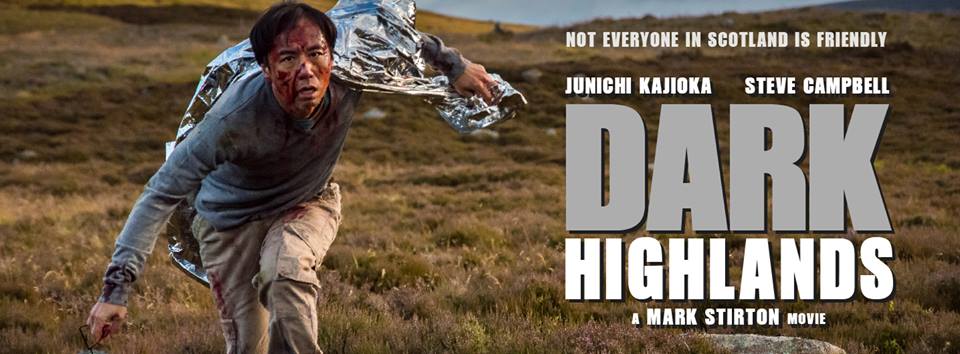
Reviews have been mixed for this recently released film – with some of the more detailed reviews noting there is little sub-text relating to the actual issues between Scotland and England and their long, troubled history. That in itself would seem odd, considering the very nature of the concept for this film. It is widely available, so hunt it down if you are interested in deciding for yourself. Under the Skin is perhaps the oddest of the “Scottish Films” in discussion here. It is directed by an Englishman, Johnathan Glazer, and co-written by an Irishman, Walter Campbell (though clearly having a name that is predominately Scottish). The author of the novel that “suggested” the film-story is Dutch, Michel Faber (raised for most of his life in Australia), but lives in Scotland and has for some time – and the Scots (no surprise), claim him as one of their own (as they do J.K. Rowling). The screenplay is very different – the screenplay writer Campbell decided to NOT read the book, and based his writing on a previous draft – apparently. 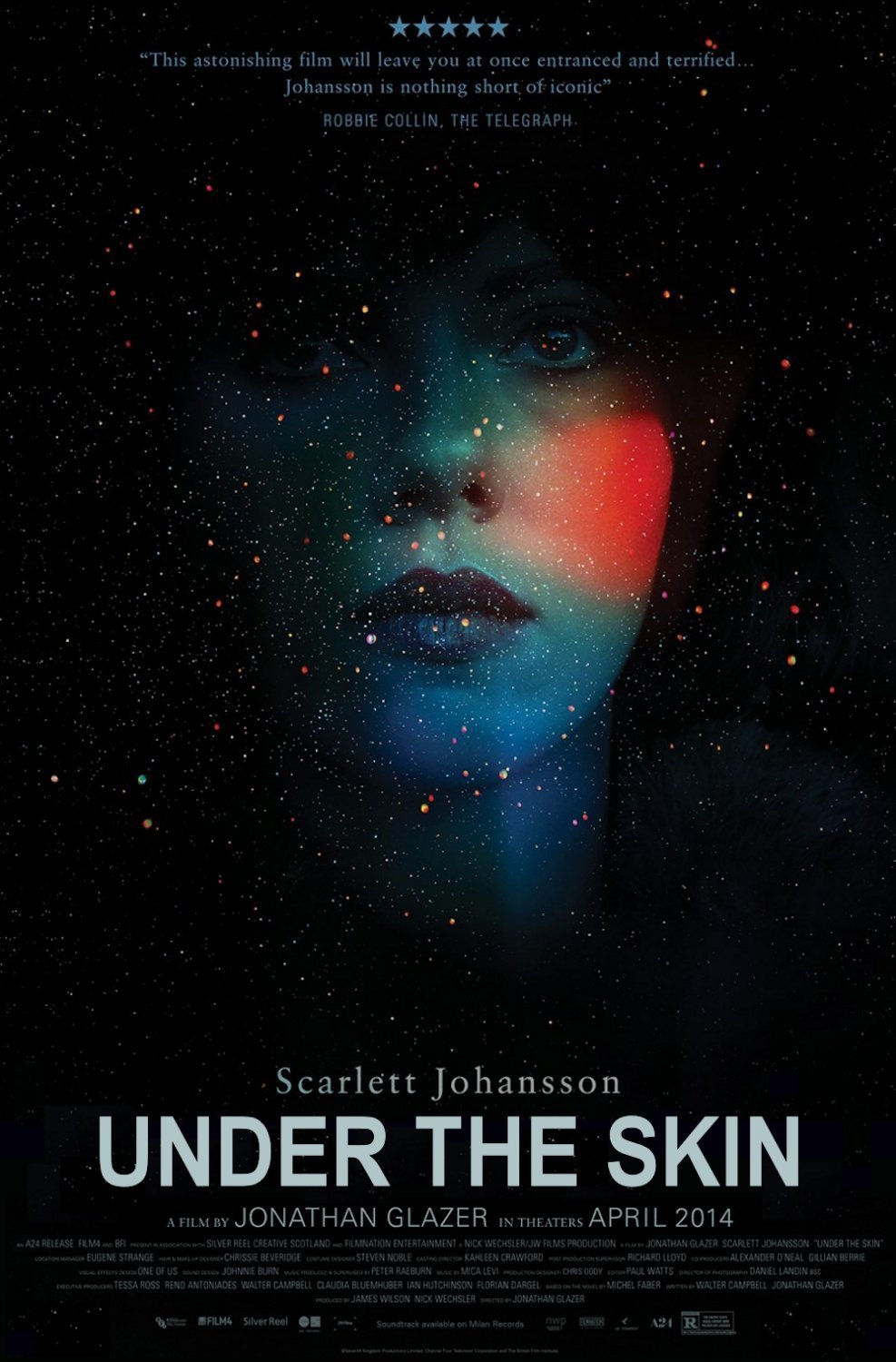
The plot concerns a strange woman played by Scarlett Johansson, who is in fact a creature from another world. She confiscates a van (and a human-woman's clothing) and travels around Glasgow (primarily), picking up strange men, enticing them to a location that is a void, with the temptation of having sex with them (or so it may seem), and then completely absorbing their bodies (for reasons we aren't really sure of – food? It is too abstract a seduction/destruction to elaborate on here). That is in essence what the film is about story wise – but it is the oddball style of directing (and Johansson's full frontal nudity) that gathered all the buzz. One aspect worth noting, is that many of the men she picks up were actually done at random and filmed (briefly) by a hidden camera. After a few minutes it was then decided if they would continue (depending on how the improvised conversation was going), and at that point they told the men/boys what was actually happening – that they were being filmed. If they decided to go forward, papers were pulled out to be signed, a brief description of what the scene expected of them, and they carried on. A very risky way to do things (filmically and otherwise), but apparently a true story about the production. It would have been too expensive to have been done on film, but digital made that part of the film cheaper and worth the risk of the experiment. Scarlett, in a dark, short wig doesn't really look like her well-known screen self and it is easy to believe the men really didn't know it was her at first. One character, meant to be deformed, was played by Adam Pearson, who has neurofibromatosis. He was found through an organization called Changing Faces which supports people with disfigurements. His appearance in the film is quite something – he has also worked in television production, and knew his way around a set. You certainly won't forget him. It is the Scottish setting, the novel's author, and the unique filming conceits that make it worth mentioning here. The film is most certainly NOT for everyone – but worth a look for the more adventurous viewers. 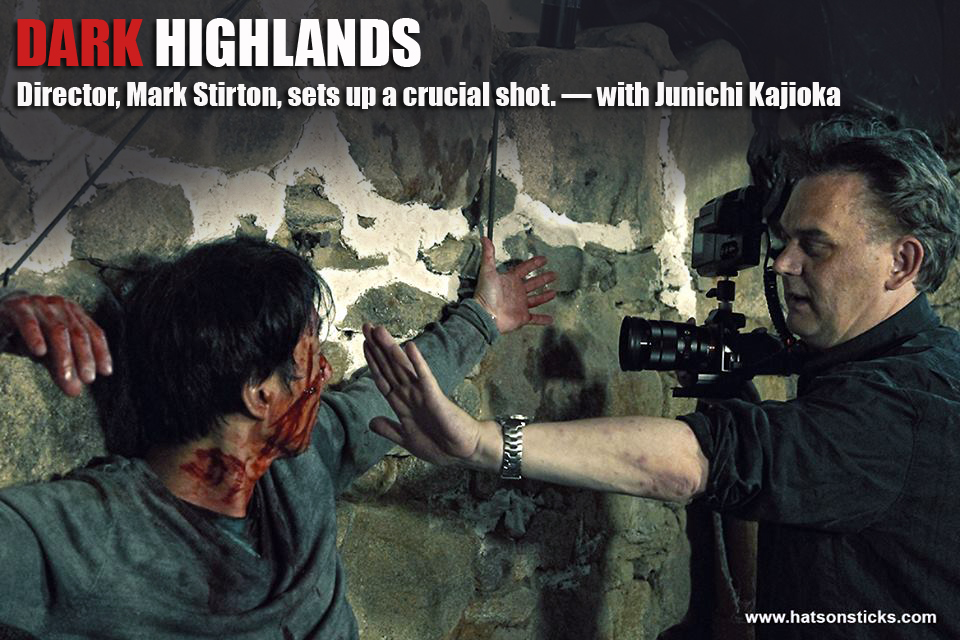
Dark Highlands is a tale about a Japanese artist (Junichi Kajioka) who visits the Highlands of Scotland to paint. The beautiful scenery inspires him, but he soon becomes the target of a sadistic, relentless killer. Alone, suffering from exposure and hunted like an animal, he must find a way to survive. The film is currently in post production, so there are no reviews as yet. The interesting aspect is that they show the weather to be crucial and dangerous. Every year, rather foolish tourists go hill-walking in the Highlands, often wearing shorts and sneakers – and find themselves in life-threatening situations. The volatile reputation of Scottish weather (mostly well deserved) seldom features in movies (save for perhaps Powell and Pressburger's masterful film I Know Where I'm Going). Quick as lighting changes, extreme temperature drops, rain and wind, coming and going, etc. are often ignored by travelers, who at this point, should really know better. I'm glad to see it features, if only in a secondary way, in a tale of terror. Mark Stirton is an Aberdeen based film-maker. This is his third feature film. He previously directed The Planet (mentioned above) and the comedy One Day Removals. 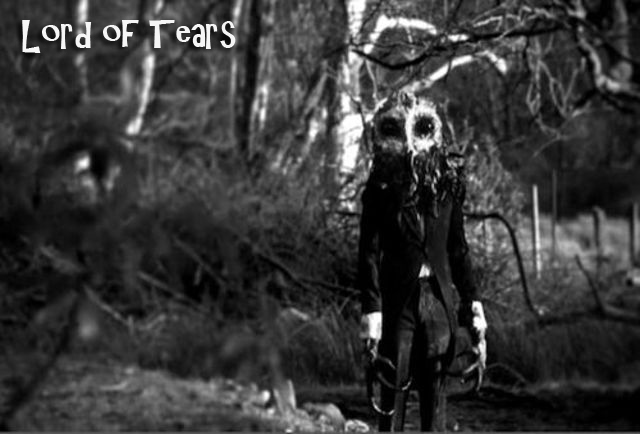
Lord of Tears is a tale of unusual terror by first time feature director Lawrie Brewster (from Dysart, Fife). The seemingly simple story revolves around James, a school teacher who goes to the country to settle the estate of his recently dead mother. He finds that there are two properties – a large manor house and a smaller one. He moves in and soon finds a terrible past revealing itself before him. His parents were both worshipers of an ancient pagan god, performing terrible ceremonies at the manor. He also discovers a young American woman – in actually a spirit of a young woman sacrificed in the past in his stead. James soon begins to be haunted by The Owlman – a mysterious figure who has appeared to him, perhaps because he is being driven mad by the ghost of the American woman in revenge for her being murdered instead of him. It all ends on a tragic note and a usual twist ending of a kind. The director claims that he wanted to find a home-grown supernatural being for this Scotland-based film and after doing research in Highland folklore found someone/something called The Owlman. The Owlman however seems to be in no way a Scottish creature of old (or even recent times), but does have some English connections and one to Cornwall (a Celtic connection to be sure, but not anywhere near the Scottish Highlands. Perhaps he flew). Those tales/sightings are not ancient either and may be completely fabricated ala the American conceived Slender Man, which has taken on a sort of mythology of its own (during their Kickstarter campaign to raise funds for Lord of Tears they actually referenced the wholly fabricated Slender Man). The Owlman character first appeared around the mid-70's. The film has a reasonably good reputation, but like many films of a smaller budget and no well-known stars, hardly known. It is easily available. Kudos to the film-makers, no matter the origins of the concept, for attempting to make a creepy, home-grown ghost story (not a monster film) in a part of the world often presumed to be rather haunted for real. So, if you are looking for a bit of Scottish horror this Halloween, there's a lot of films to choose from – old and new. 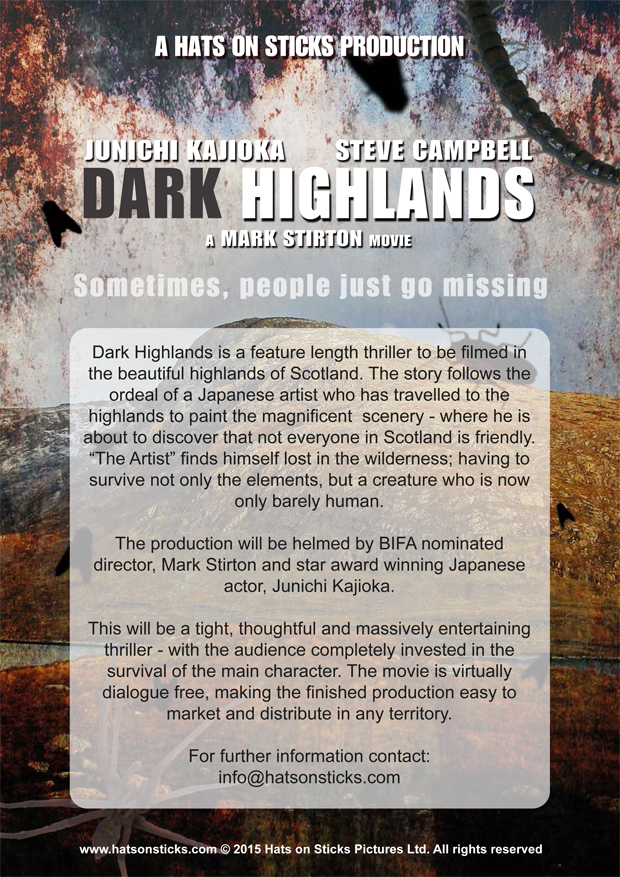
The Body Snatcherby Tom Doran Resurrectionists, more commonly known as body snatchers, had a lucrative run in 19th century Scotland. Edinburgh was leading the world with medical education and innovations. It was not easy to get enough corpses to go around for all the students and teachers who needed them to dissect and teach their anatomy classes. So, instead of "willed" bodies of the recently deceased, or criminals fresh from the gallows, various "entrepreneurs" went into the newly lucrative business of supplying bodies for the medical schools - and many were not very particular as to where they got the bodies It was a terrible time for those whose loved ones died and were buried during this time - their final resting places were often hardly that. Guards were hired, elaborate metal cages and other devices erected to protect the newly dead, often to no avail. Burke and Hare were the two most famous of these criminals, and it was their crimes that inspired Robert Louis Stevenson, one of the world's great authors to fashion a tale of grave robbing - now considered a classic tale of auld Scotland. So, for a happy Halloween, follow the link and enjoy a truly Scottish tale of terror - The Body Snatcher! 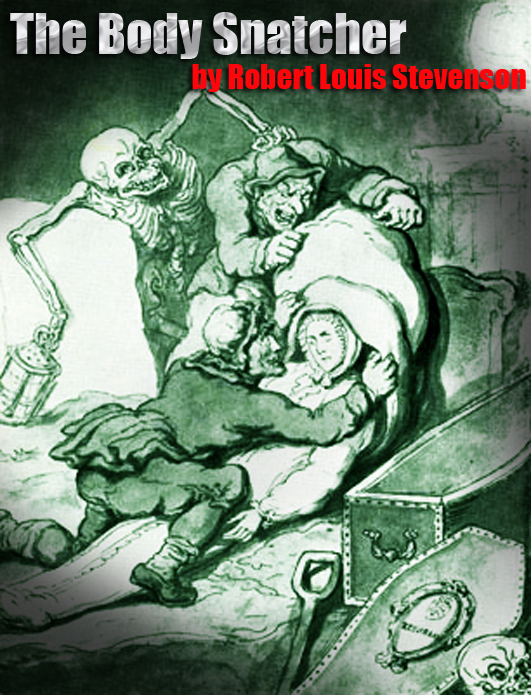 Tweetscollected by ceciliaScottish grandmother's sure are feisty. Read about the 104-Year-Old Street Artist Who Yarn-Bombs Her Town |